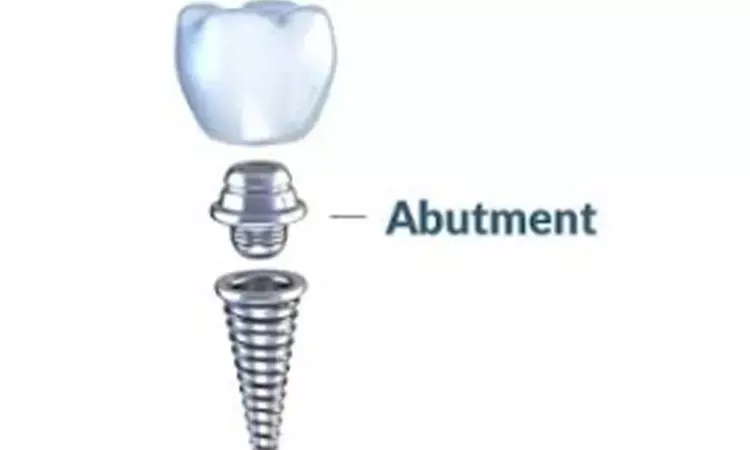- Home
- Medical news & Guidelines
- Anesthesiology
- Cardiology and CTVS
- Critical Care
- Dentistry
- Dermatology
- Diabetes and Endocrinology
- ENT
- Gastroenterology
- Medicine
- Nephrology
- Neurology
- Obstretics-Gynaecology
- Oncology
- Ophthalmology
- Orthopaedics
- Pediatrics-Neonatology
- Psychiatry
- Pulmonology
- Radiology
- Surgery
- Urology
- Laboratory Medicine
- Diet
- Nursing
- Paramedical
- Physiotherapy
- Health news
- Fact Check
- Bone Health Fact Check
- Brain Health Fact Check
- Cancer Related Fact Check
- Child Care Fact Check
- Dental and oral health fact check
- Diabetes and metabolic health fact check
- Diet and Nutrition Fact Check
- Eye and ENT Care Fact Check
- Fitness fact check
- Gut health fact check
- Heart health fact check
- Kidney health fact check
- Medical education fact check
- Men's health fact check
- Respiratory fact check
- Skin and hair care fact check
- Vaccine and Immunization fact check
- Women's health fact check
- AYUSH
- State News
- Andaman and Nicobar Islands
- Andhra Pradesh
- Arunachal Pradesh
- Assam
- Bihar
- Chandigarh
- Chattisgarh
- Dadra and Nagar Haveli
- Daman and Diu
- Delhi
- Goa
- Gujarat
- Haryana
- Himachal Pradesh
- Jammu & Kashmir
- Jharkhand
- Karnataka
- Kerala
- Ladakh
- Lakshadweep
- Madhya Pradesh
- Maharashtra
- Manipur
- Meghalaya
- Mizoram
- Nagaland
- Odisha
- Puducherry
- Punjab
- Rajasthan
- Sikkim
- Tamil Nadu
- Telangana
- Tripura
- Uttar Pradesh
- Uttrakhand
- West Bengal
- Medical Education
- Industry
Ultrasonic cleaning effectively cleans customized abutment surfaces: Study

According to recent research, it has been found that the ultrasonic cleaning method is conveniently applicable in the dental clinic for eliminating contamination of the customized abutment surface, as published in the BMC Oral Health Journal.
The presence of contaminants in the implant-abutment interface initiates an inflammatory response, which may damage tissue and activate osteoclasts, thus subsequently resulting in bone resorption and the resetting of biologic width. Due to a recent demand for aesthetic dental implants, customized abutments usage has been significantly increased. Despite this, the importance of abutment surface treatments has been generally overlooked in applying to patients. There is insufficient information regarding manufacturers and techniques for surface treatment and sterilization. A lot of pollutions are generated on the customized abutment surface following milling procedure.
Hence, Sunjai Kim and colleagues from the Department of Prosthodontics, Gangnam Severance Dental Hospital, College of Dentistry, Yonsei University, Korea conducted this study to evaluate the surface topography and cleanliness of customized abutments after cleaning procedures, which are simply applicable in the dental clinic.
Thirty computer-aided design and computer-aided manufacturing internal connection type titanium abutments were produced, milled, and randomly divided into 3 groups: steam cleaning (control group), chlorhexidine (CHX) scrubbing (test group 1), and ultrasonic cleaning with CHX solution, acetone, and ethyl alcohol (test group 2). Each group was evaluated using microscopic and microbial analysis.
The following results were shown-
a. Foreign bodies were observed on the abutment surfaces in control group and test group 1, but not in test group 2.
b. Bacteria were observed on 40% of the agar plates following steam cleaning; most of the colonies consisted of Bacillus cereus and Staphylococcus warneri.
c. Colony growth was absent following test group 1 and 2.
Therefore, the authors concluded that "for customized abutments, cleaning with steam is ineffective. CHX scrubbing effectively eliminates only bacteria. Ultrasonic cleaning with CHX solution, acetone, and ethyl alcohol successfully removes both foreign bodies and bacteria. Thus, the ultrasonic cleaning method is conveniently applicable in the dental clinic for eliminating contamination of the customized abutment surface."
Dr. Nandita Mohan is a practicing pediatric dentist with more than 5 years of clinical work experience. Along with this, she is equally interested in keeping herself up to date about the latest developments in the field of medicine and dentistry which is the driving force for her to be in association with Medical Dialogues. She also has her name attached with many publications; both national and international. She has pursued her BDS from Rajiv Gandhi University of Health Sciences, Bangalore and later went to enter her dream specialty (MDS) in the Department of Pedodontics and Preventive Dentistry from Pt. B.D. Sharma University of Health Sciences. Through all the years of experience, her core interest in learning something new has never stopped. She can be contacted at editorial@medicaldialogues.in. Contact no. 011-43720751
Dr Kamal Kant Kohli-MBBS, DTCD- a chest specialist with more than 30 years of practice and a flair for writing clinical articles, Dr Kamal Kant Kohli joined Medical Dialogues as a Chief Editor of Medical News. Besides writing articles, as an editor, he proofreads and verifies all the medical content published on Medical Dialogues including those coming from journals, studies,medical conferences,guidelines etc. Email: drkohli@medicaldialogues.in. Contact no. 011-43720751


